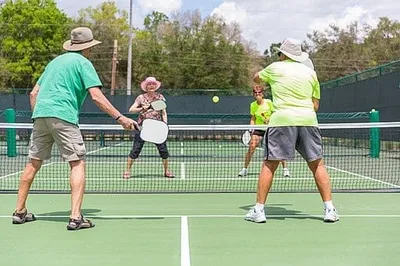Recover Like a Pro: Crucial Warm-Up and Cool-Down Activities for Optimal Tennis Performance
A special combination of agility, power, and endurance is required for tennis, a dynamic and thrilling activity that is popular in Tagum, Davao Region, Philippines. It’s crucial to properly prepare your body before playing and support its recovery afterward, whether you’re hitting the courts for a friendly rally or competing. Ignoring these important stages might result in injury, poor performance, and chronic muscular discomfort. In order to keep you prepared to play your best tennis and recuperate efficiently in our tropical climate, Let’s Trek It offers a thorough guide to the fundamental warm-up and cool-down exercises for tennis players.
I. Igniting Your Engine: The Importance of a Tennis-Specific Warm-Up
A proper warm-up is not just about breaking a light sweat; it’s about preparing your body for the specific demands of tennis. A well-executed warm-up will:
- Increase Body Temperature: Raising your core temperature improves muscle elasticity and makes them less susceptible to injury.
- Enhance Blood Flow: Increased circulation delivers more oxygen and nutrients to your working muscles, improving performance.
- Improve Flexibility and Range of Motion: Dynamic stretches prepare your joints and muscles for the wide range of movements in tennis, from reaching for volleys to powerful serves.
- Activate Key Muscle Groups: Specific exercises wake up the muscles you’ll be using most, ensuring they’re ready to fire efficiently.
- Improve Coordination and Reaction Time: Light, sport-specific movements prime your nervous system for the quick decisions and agile footwork required in tennis.
- Mental Preparation: A focused warm-up routine can also help you mentally prepare for your game or practice session.
II. Your Pre-Match Power-Up: Dynamic Warm-Up Exercises for Tennis
Dynamic stretches, which involve movement, are ideal for warming up as they actively engage your muscles and improve range of motion without the risk of reducing power output associated with static stretching before exercise. Aim for a 10-15 minute warm-up routine that includes the following:
- Light Cardio (3-5 minutes): Begin with a gentle jog around the court, gradually increasing your heart rate. You can incorporate variations like backward jogging, side shuffles, and high knees to engage different muscle groups. Skipping is also an excellent option for tennis players, improving coordination and agility.
- Arm Circles (Forward and Backward): Stand with your feet shoulder-width apart and extend your arms out to the sides. Perform large, controlled circles forward for 20-30 seconds, then repeat backward. This warms up your shoulders and upper back, crucial for serving and overheads.
- Leg Swings (Forward, Backward, and Lateral): Using the net for balance if needed, swing one leg forward and backward in a controlled motion, focusing on a comfortable range of motion. Repeat with the other leg. Then, swing each leg laterally across your body. These exercises warm up your hips, hamstrings, and groin, essential for court movement.
- Trunk Twists: Stand with your feet shoulder-width apart and arms bent at your sides. Rotate your torso gently from side to side, keeping your hips relatively still. This warms up your core and improves rotational flexibility needed for groundstrokes and serves.
- Walking Lunges: Step forward with one leg, bending both knees to 90 degrees, ensuring your front knee stays behind your toes. Push off with your back foot and step through with the other leg. Perform 10-12 lunges per leg. You can add a torso twist over the front leg to further engage your core.
- Knee Lifts and Butt Kicks: While jogging lightly or standing in place, bring your knees up towards your chest, alternating legs. Follow this with butt kicks, bringing your heels up towards your glutes. These activate your leg muscles and improve flexibility.
- Shadow Swings (2-3 minutes): Grab your racket and mimic your tennis strokes (forehand, backhand, serve, volley) without hitting a ball. Focus on proper technique and gradually increase the intensity. This helps to prime your muscles for the specific movements of tennis.
- Mini-Tennis (Optional): If you have a partner, engage in a few minutes of gentle rallying within the service boxes. This helps to get your eye in and practice basic strokes at a lower intensity.
III. Smoothing the Gears: The Importance of a Tennis-Specific Cool-Down
Just as important as the warm-up, a proper cool-down helps your body transition back to a resting state after the demands of tennis. A well-executed cool-down will:
- Lower Heart Rate and Breathing: Gradually bringing your cardiovascular system back to normal.
- Reduce Muscle Soreness and Stiffness: Gentle stretching helps to remove metabolic byproducts from your muscles.
- Improve Flexibility: Static stretches are more effective after exercise when your muscles are warm, helping to increase long-term flexibility.
- Prevent Blood Pooling: Light activity and stretching help to maintain blood flow and prevent dizziness.
- Promote Recovery: A good cool-down sets the stage for faster muscle repair and reduces the risk of injury in future sessions.
IV. Your Post-Match Recovery Routine: Static Cool-Down Stretches for Tennis
Static stretches, where you hold a stretch for 20-30 seconds, are ideal for the cool-down phase. Focus on the major muscle groups used in tennis:
- Shoulder Stretches:
- Cross-Body Shoulder Stretch: Bring one arm across your chest and gently pull it closer with your other hand, feeling a stretch in your shoulder. Hold for 20-30 seconds and repeat on the other side.
- Overhead Triceps Stretch: Reach one arm overhead, bend your elbow, and let your hand drop behind your back. Use your other hand to gently pull your elbow further down, stretching your triceps. Hold for 20-30 seconds and repeat on the other side.
- Trunk Stretches:
- Torso Twist (Supine or Standing): Lie on your back with knees bent or stand with feet shoulder-width apart. Gently rotate your torso to one side, holding the stretch for 20-30 seconds. Repeat on the other side.
- Leg Stretches:
- Quadriceps Stretch (Standing or Lying): Stand and grab your ankle, pulling your heel towards your buttock to stretch the front of your thigh. Hold for 20-30 seconds and repeat on the other side. You can also perform this lying on your stomach.
- Hamstring Stretch (Standing or Seated): Stand with one leg slightly forward and straight, heel on the ground, toes pointing up. Lean forward from your hips until you feel a stretch in the back of your thigh. Hold for 20-30 seconds and repeat on the other side. You can also perform this seated with legs extended.
- Calf Stretch (Against a Wall or Step): Place the ball of your foot on a raised surface or lean against a wall with one leg straight back and the other bent forward. Feel the stretch in your calf. Hold for 20-30 seconds and repeat on the other side.
- Groin Stretch (Butterfly Stretch): Sit on the ground with the soles of your feet together and gently push your knees down towards the floor with your elbows. Hold for 20-30 seconds.
- Wrist and Forearm Stretches: Extend one arm straight out in front of you, palm facing down. Gently bend your wrist down, pointing your fingers towards the floor, and use your other hand to apply a gentle stretch. Repeat with your palm facing up and bending your wrist upwards. Hold each stretch for 20-30 seconds and repeat on the other arm.
- Light Cardio (Optional): A few minutes of light jogging or walking after your match can help with blood flow and recovery.
V. Listen to Your Body: Tailoring Your Routine
Remember that these are general guidelines. Pay attention to how your body feels and adjust your warm-up and cool-down routines accordingly. If you have any specific muscle tightness or areas of concern, spend extra time stretching those areas.
Conclusion: Play Stronger, Recover Faster with Proper Preparation
Incorporating a consistent and effective warm-up and cool-down routine into your tennis sessions in Tagum, Davao Region, Philippines, is an investment in your performance, longevity, and overall well-being as a player. By preparing your body for the demands of the game and aiding its recovery afterward, you’ll be able to play stronger, reduce your risk of injury, and enjoy the sport you love for years to come. Let’s Trek It encourages you to make these routines an integral part of your tennis journey – your body will thank you for it!





